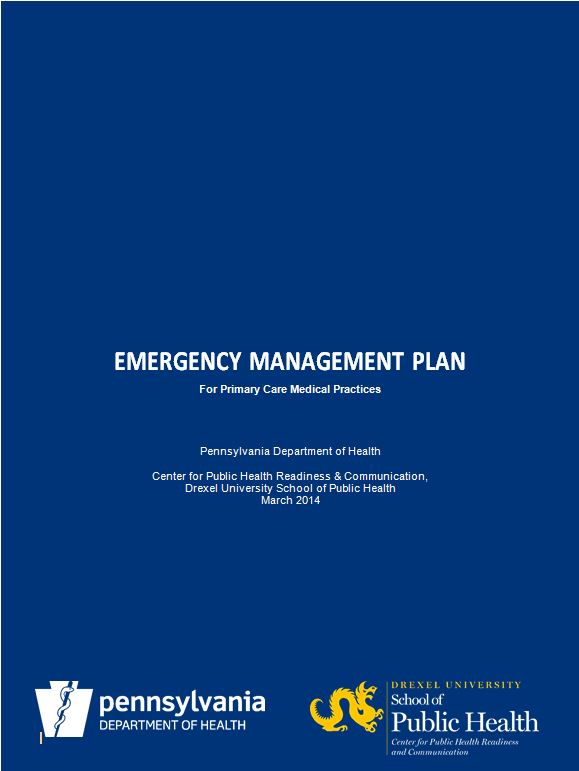Primary Care Medical Practices and Public Health Emergency Preparedness
 In 2013, the Pennsylvania Department of Health asked the Center for Public Health Readiness and Communication to work with them to integrate primary care physicians and their medical practices into public health preparedness efforts in Pennsylvania. As part of this project, the CPHRC conducted a survey of primary care physicians in the state which indicated that practices needed assistance with developing emergency plans and more opportunities for communication with public safety and public health agencies. Respondents also believed that their patients with special health care needs were poorly prepared for disasters, and that they needed resources to help them. To address these gaps, CPHRC has developed 5 tools to assist practices and their patients.
In 2013, the Pennsylvania Department of Health asked the Center for Public Health Readiness and Communication to work with them to integrate primary care physicians and their medical practices into public health preparedness efforts in Pennsylvania. As part of this project, the CPHRC conducted a survey of primary care physicians in the state which indicated that practices needed assistance with developing emergency plans and more opportunities for communication with public safety and public health agencies. Respondents also believed that their patients with special health care needs were poorly prepared for disasters, and that they needed resources to help them. To address these gaps, CPHRC has developed 5 tools to assist practices and their patients.
Emergency Preparedness Checklist for Practices
A summary checklist that outlines the major activities that community practices should undertake to prepare for disasters.
Download [PDF]
Emergency Plan Guidance and Template for Practices
A template plan that guides medical practices through the development of an emergency plan.
Download [Word]
Communicating with Patients During Public Health Emergencies – Communications Toolkit
A toolkit to assist practices with communicating with patients before, during and after disasters. It includes templates for website postings, voice mail messages, and social media messages.
Download [Word]
Emergency Preparedness for Patients with Special Health Care Needs – Checklist for Practices
A checklist for practices that outlines steps they can take during patient encounters to encourage preparedness planning for patients at high-risk during disasters.
Download [PDF]
“Are You Ready for Emergencies?” Handout for Patients with Special Health Care Needs
A checklist with planning resources that can be reviewed and given to patients during medical encounters, written in plain language at a 7th grade reading level.
Download [PDF]